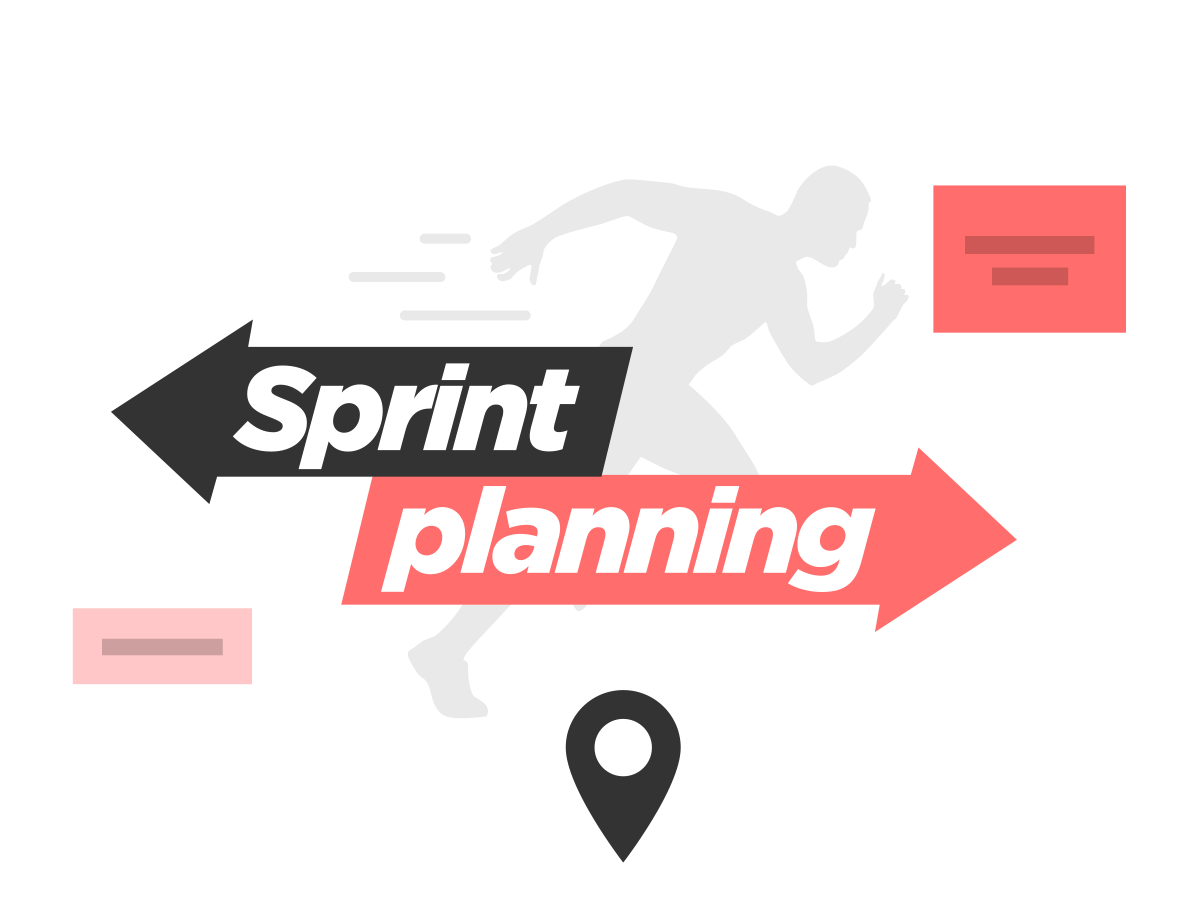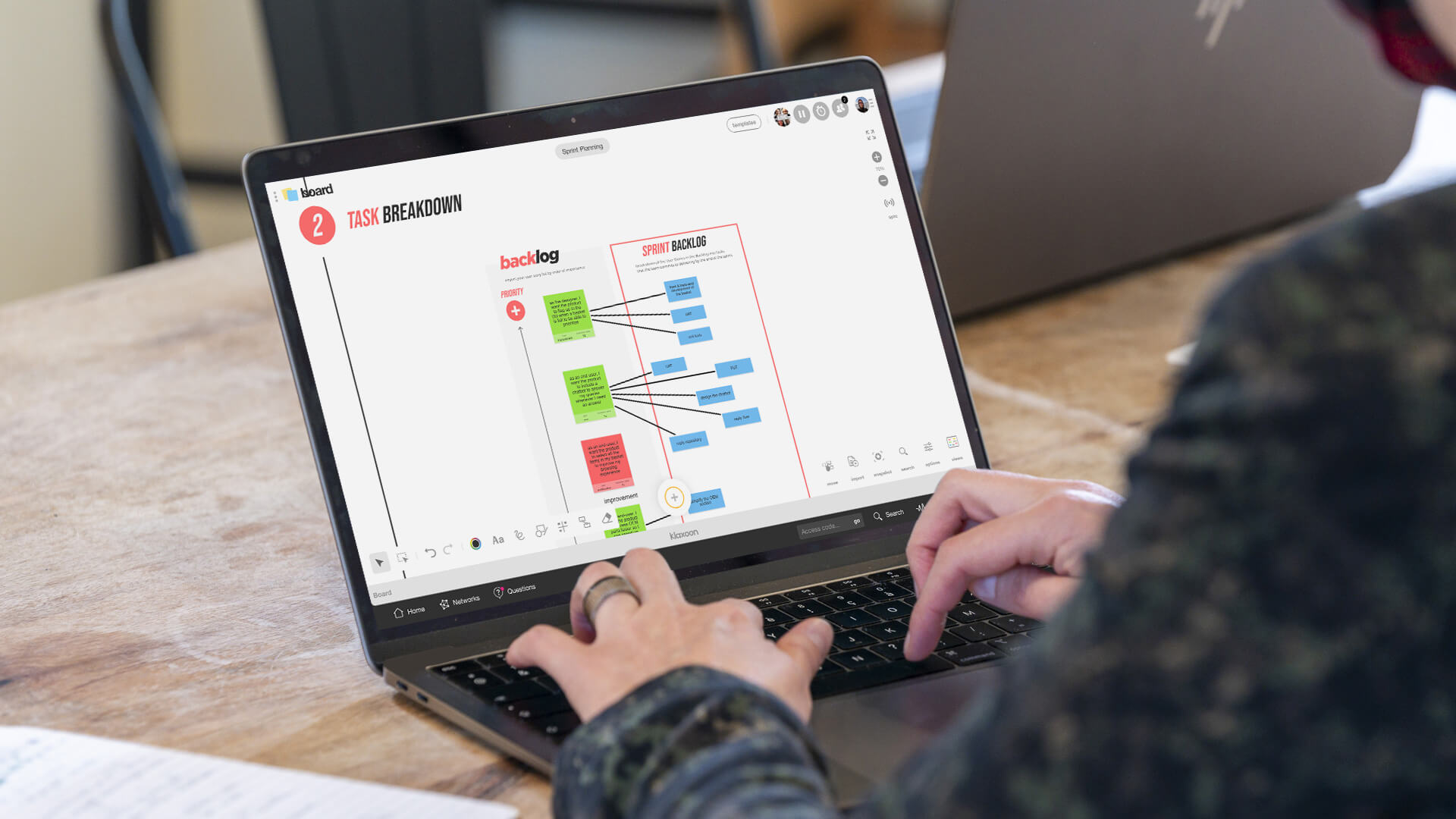Sprint Planning: the simple way to plan and organize the next team sprint
Published on February 14, 2025
Sprint Planning: the simple way to plan and organize the next team sprint


Use the Sprint Planning template to define the scope of the next sprint in your scrum project management. Once you have set a realistic and achievable goal as a team, determine and plan all the tasks that the development team needs to complete for its next cycle.
The term "scrum" comes from rugby, the principle being that the team moves forward together and is always ready to realign the project as it progresses, like a rugby ball that has to pass from hand to hand until a try is scored.
The Scrum method is based on sprints, which are short periods of time ending with a presentation about what the team has added to the product.
Sprint planning enables you to determine the team’s scope of work and the tasks that need to be completed during the next iteration.
Using the Sprint Planning template, you can first of all define a clear and realistic goal, then break down the list of tasks to be performed into technical sub-tasks, and finally estimate the complexity of the tasks selected in relation to the team's development capacity with Planning Poker.


Easily add ideas in the backlog space, using a dedicated color code.
Agile project management methods such as Scrum, which are popular for both hybrid and remote work, involve the active participation of the client throughout the project, which makes it possible to create products closely aligned with their needs.
In addition, whether you are working from home or in a face-to-face meeting, the Sprint Planning template gives your team an overview of the product to be developed and ensures they have everything they need to get started. The roadmap is clear and well-planned.
Agile sprint planning is a method that relies on teams to be self-organized, with each member taking responsibility and being proactive. It is up to the development team to determine the best way to do their job. And, because it can assess team velocity, this tool also avoids overloading and repeatedly delayed steps.
Start by inviting your team to the whiteboard. Then, fill in the important background information for the product on which you are going to work as a team: development team, Product Owner and Scrum Master. Remember to add names and photos, as this will make your scrum project management much more visual. Determine the duration of sprints together, according to the size of your project and your team. The idea is to keep the same duration for each cycle so that you can reproduce your process and keep the same momentum. Set the precise goal of this sprint and you’re good to go!
The Product Owner comes into play here, copying and pasting the user stories you have already defined using the Product backlog template, or importing them from a spreadsheet. Using the timer at the top of your board, time a 45-minute Q&A session about the features to be developed and improved, then, as a team, select which ones you want to keep for your sprint. Change their color to make them stand out, and then ask the development team to break them down into several tasks. This involves listing all the actions required to make the feature deliverable, then moving them to the Sprint Backlog section and linking them to each user story concerned using connectors.
Then, estimate the workload required for the team to perform all the sprint tasks using Planning Poker. The development team members place their photos around the table, and then you copy one of the tasks from the Sprint Backlog to the center. At the same time, all the participants use their cards to estimate the duration and complexity of the task: zero for a very simple feature or one already in place, 100 for the most complex, infinite for any task with a complexity greater than 100, and “?” when it’s not possible to estimate the complexity of a task.
There may have to be some collective estimating if there is no agreement about the scores. The people who gave the most extreme scores discuss this, everyone votes again and finally, the highest score is retained. The score of each user story is noted in Categories and then moved to the Action Plan box.
Now all you have to do is estimate the team's velocity collectively by discussing it together and awarding points. Check that the total number of user stories does not exceed your velocity, otherwise launch a Like session to separate the tasks to be kept for this sprint from those to be postponed to the next. Finish your sprint planning by assigning each action to a member of the team and you’re all set until the next time!
Get inspired by other templates from the same categories
Unlock your teamwork potential